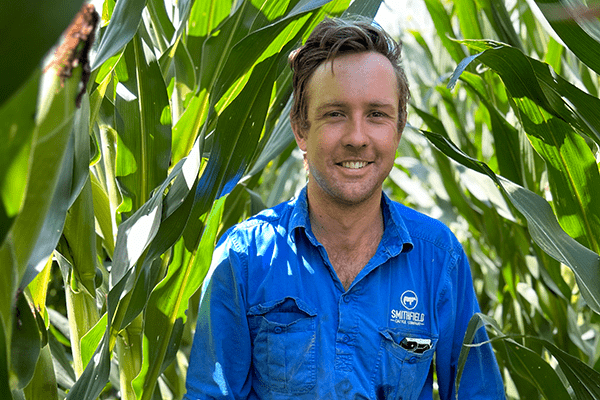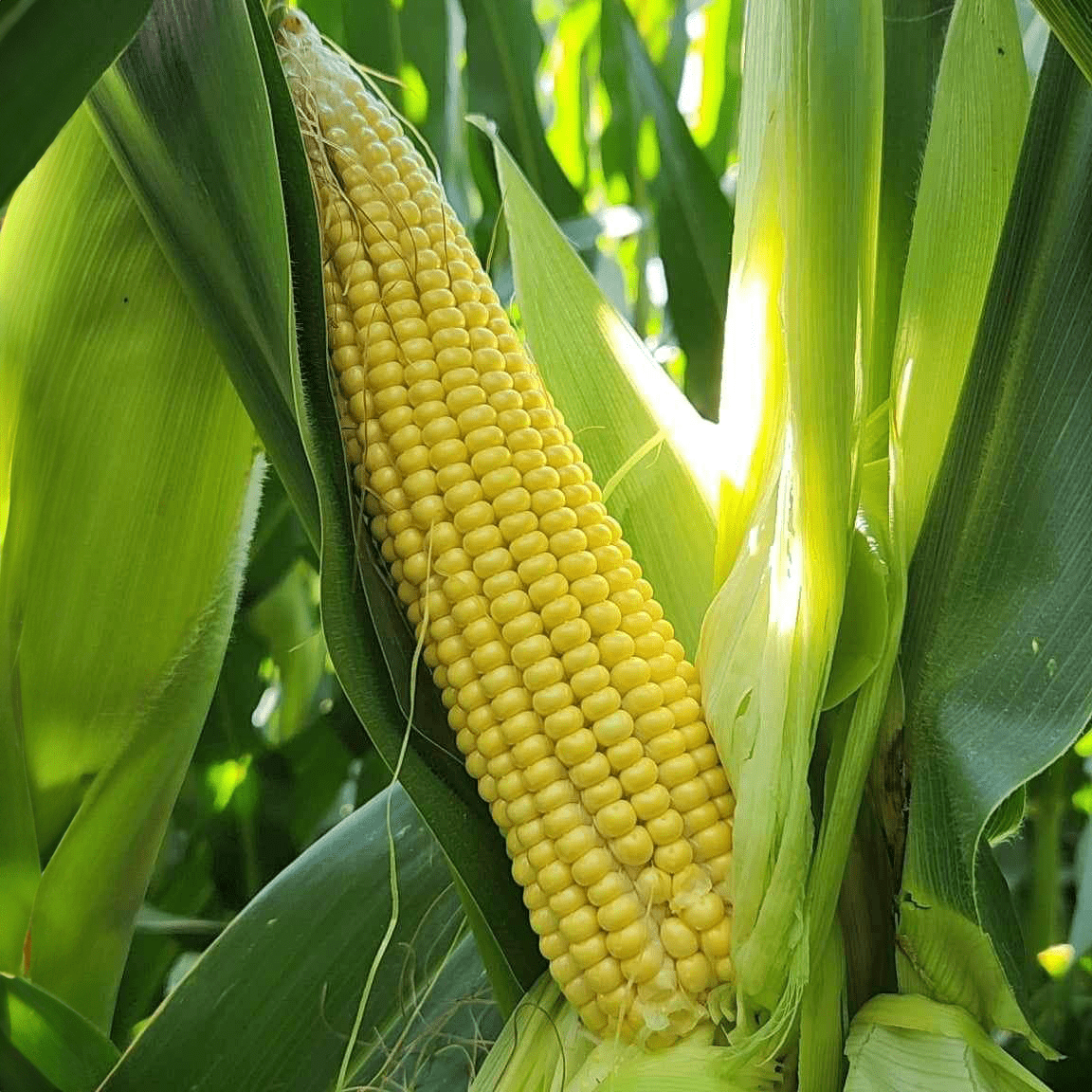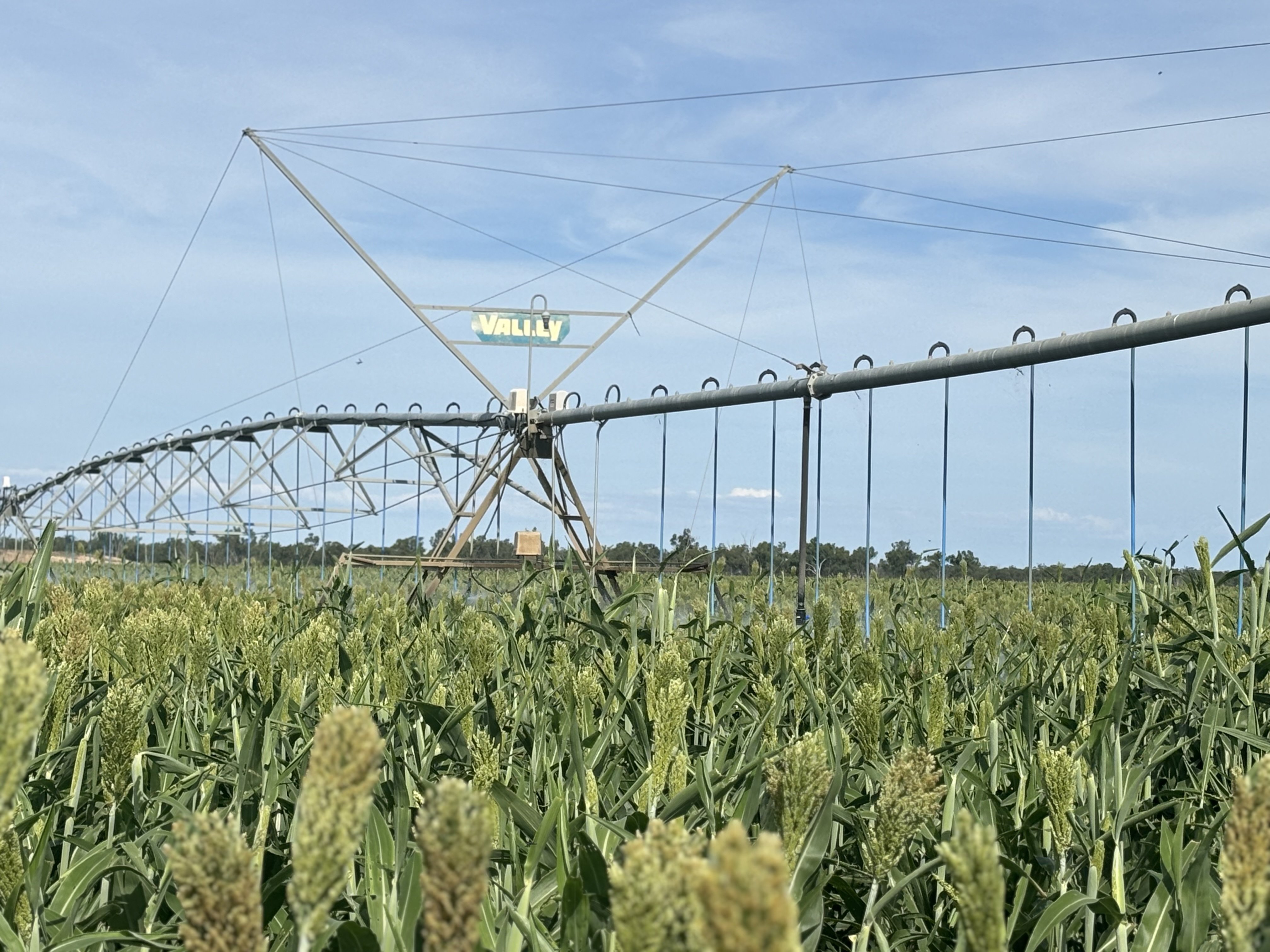Smithfield Cattle Co rewarded with impressive silage yields with P2307 corn and Graze N Sile forage duo
The Yelarbon QLD-based Sapphire feedlot, owned and operated by the Smithfield Cattle Company, saw exceptional results from their recent crops of Pioneer brand Graze-N-Sile hybrid forage sorghum and P2307 hybrid corn seed with respective yields of 37 tonnes per hectare (t/ha) and 55 t/ha.
 Farm manager Ben Strahley standing in corn hybrid P2307.
Farm manager Ben Strahley standing in corn hybrid P2307.
The property is a world-class facility that is used by Smithfield Cattle Co for irrigated and dryland cropping and cattle backgrounding, in addition to the feedlot operations, licensed to a capacity of 28,750 standard cattle units, aimed at producing high cattle performance for the speciality beef markets.
When planning their cropping rotation, farm manager Ben Strahley and the Smithfield team carefully considered water availability and weather conditions, ultimately deciding to split their rations between forage sorghum and maize silage.
"Maize was chosen as a great winter silage for cattle performance. Forage sorghum was also chosen to take advantage of the water available at the time and the opportunity to fill the feedlots silage pits going into a forecast El Nino that never occurred," he said.
Pioneer Seeds Territory Sales Manager for the southern Darling Downs region, Ben Thrift, recommended the resilient P2307 corn hybrid to their existing silage crop strategy to diversify their rations.
"Smithfield Cattle Co has a long association with the Graze N Sile forage hybrid and have been very happy with it as they build up their high-quality bulk silage, but they were looking to mitigate their risk and split their rations this season.
"P2307 corn seed was ideal for their situation, as it's flexible planting timing, high yield potential, standability and resilience makes it a safe option for maize silage," he said.
 The P2307 corn hybrid's flexibility and resilience made it the perfect fit for the Sapphire feedlot.
The P2307 corn hybrid's flexibility and resilience made it the perfect fit for the Sapphire feedlot.
225 hectares of P2307 were planted on 4 September 2023 at a rate of 17.8Kg/ha, followed by 200 hectares of Graze N Sile on 4 January 2024 at a rate of 3.5Kg/ha.
The grower pre-applied 200kg/Ha of Urea and 300kg/ha of Cotton Sustain under the corn crop at the start of the season, then applied an additional 300kg/Ha Urea in crop.
The P2307 crop received an application of Round Up at pre-plant, Lorsban at planting time, and a post-spray of Dual Gold and Atrazine.
The Graze N Sile received a pre-application of nitrogen at 300Kg/Ha and manure at 15 tonnes/ha underneath it, followed by a one armyworm spray during the season.
The forage sorghum also received a pre-plant application of Round Up, followed by Gramoxone, Atrazine and Dual Gold post-plant.
Both crops were irrigated, receiving a pre-water of 40mm. The corn saw 305mm of in-crop rainfall, and was topped up with 280mm from irrigation, while the forage sorghum received 388mm of rainfall and 225mm of irrigation.

The Graze N Sile forage sorghum hybrid thrived under 388mm of rainfall and 225mm of irrigation during the season.
Mr Strahley noted that while fall armyworm was present in both crops, the damage was minimal.
"We only saw a minimal visual impact on the corn, and a moderate physical impact on the sorghum, but it didn't affect yield significantly," he said.
Both crops were chopped for silage, with the corn harvested from 4 January 2024, and the forage sorghum from 1 May 2024.
Mr Strahley was very pleased with the results yielded from both hybrids.
"The corn made excellent silage, with an average wet yield of 55t/ha. The sorghum silage was also great, with an average wet yield of 37t/ha,” he said.
Valuing rotation in his summer cropping strategy to best utilise seasonal conditions, the grower is currently making plans for the next summer season.
"I may grow some dryland hybrid forage sorghum for silage again, pending the seasonal conditions and the available stored moisture," he said.
Diversifying a cropping strategy for livestock feed with multiple hybrids across differing planting and harvest windows helps manage risks from varying conditions and pests, leading to stable yields and improved crop resilience, in addition to the nutrition benefits for the cattle, contributed by each crop.
Contact your local Pioneer Seeds representative to learn more about how Pioneer brand hybrids can fit into your silage strategy.
